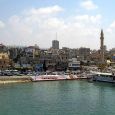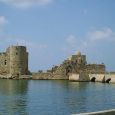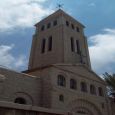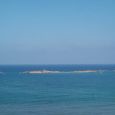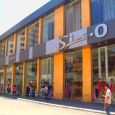Sidon
Advertisement
By Air
The closest airport for Sidon is the Rafic Hariri International Airport and is located in the southern suburbs.Turkish Airlines operates daily 3 flights between Istanbul and Beirut and Vice Versa.
By Taxi
Getting around in Sidon as in all Lebanon is best by taking a taxi.Cabs provide two services 1.A Taxi ride with a fare charge of 5000 L.L. around 3.25 USD and 2.Service is the word you use to permit other passengers to board and then the charge is 2000 L.L. around 1.25 USD.
Advertisement
Sidon Sea Castle
Is a castle in Sidon, Lebanon.It was built by the Crusaders in 1228 on a small island connected to the mainland by a causeway.A climb to the top leads to the roof where there is a good view of the port and the old part of the city.Today the castle consists primarily of two towers connected by a wall. In the outer walls Roman columns were used as horizontal reinforcements, a feature often seen in fortifications built on or near former Roman sites.The west tower is the better preserved of the two. Old prints of the fortress show it to be one of great beauty, but little remains of the embellishments that once decorated its ramparts.After the fall of Acre to the Mamluks in 1291, all the sea castles were destroyed to prevent the Crusaders from re-establishing footholds on the coast.
Sidon Soap Museum
Is a museum in Sidon, Lebanon.It traces the history of soap making in the region, its development and manufacturing techniques.Visitors can see a demonstration of how traditional olive oil soaps are made and learn about the history of the "hammam" (bath) traditions.A historical section of the museum introduces artifacts which were found during onsite excavation and which include remains of clay pipe heads dating from the 17th to 19th century as well as pottery fragments.The Museum building is an old soap factory built in the 17th century, although containing parts thought to date back to the 13th century, and was restored by the Audi Foundation before officially opening to the public in November 2000.
Eshmun Temple
Is an ancient place of worship dedicated to Eshmun, the Phoenician god of healing.It is located near the Awali river, 2 kilometres (1.2 mi) northeast of Sidon in southwestern Lebanon.The site was occupied from the 7th century BC to the 8th century AD, suggesting an integrated relationship with the nearby city of Sidon.Although originally constructed by Sidonian king Eshmunazar II in the Achaemenid era (c. 529–333 BC) to celebrate the city's recovered wealth and stature, the temple complex was greatly expanded by Bodashtart, Yatan-milk and later monarchs.Because the continued expansion spanned many centuries of alternating independence and foreign hegemony, the sanctuary features a wealth of different architectural and decorative styles and influences.
Our Lady of Mantara
Also known in English as Our Lady of Awaiting, is a holy Christian site and a Marian shrine in the village of Maghdouche in Lebanon.The shrine consists of a tower crowned with the statue of the Virgin and Child, a cathedral, a cemetery and a sacred cave believed to be the one where the Virgin Mary rested while she waited for Jesus.Many historians agree that the devotion to the Virgin Mary in Lebanon replaced the Phoenician worship of Astarte.Temples and shrines to Astarte were converted to Christian places of worship, honoring the Virgin.This is also true in Magdhdouche where within the vicinity of Our Lady of Mantara are the remains of a shrine to Astarte.
Information not available
Information not available
Advertisement

